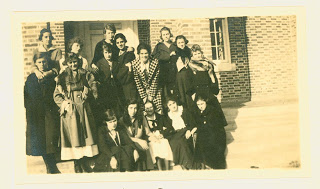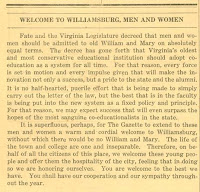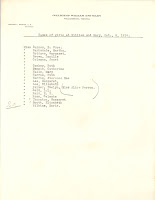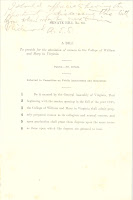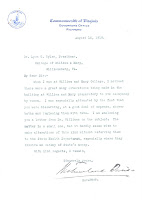Further reports of the influenza epidemic (commonly known as the "Spanish flu") in Williamsburg in the Gazette are sparse, but the October 3 edition of the newspaper did note that the dance hall at the Marx Hotel had closed to help prevent the spread of the disease, and encouraged other businesses in the area to do the same. On campus, classes were cancelled during the quarantine.
Martha Barksdale, one of the first women students, mentioned the quarantine in her diary entry of November 26 and that none of the women in Tyler Hall were ill. New to the dormitory and college life, they used the break from classes to get to know each other, and even play a game of basketball. The quarantine period helped established Tyler as a center for activity for the female students. Although fewer than 14 members of the first group lived in the dorm, the women who lived off-campus in Williamsburg spent much of their free time there. As Janet Coleman Kimbrough described in an interview, "we were tremendously interested in each other [...] We spent a great deal of time discussing clothes and manners and what everybody was doing and whether to use lipstick or not and whether a girl who kissed boy was fast and so forth."
The students afflicted with the disease eventually recovered and the campus quarantine was lifted on October 5. Classes resumed, and the students returned to work.
Middle row, l-r: Janet Coleman, Marie Wilkins, Louise Reid, Martha Barksdale, Margaret Lee
An excerpt of Janet Coleman Kimbrough's interview is featured in the online exhibit, "The Petticoat Invasion": Women at the College of William and Mary, 1918-1945. Full text of Kimbrough's interview, issues of The Virginia Gazette, and Catherine Dennis' scrapbook are available in the Special Collections Research Center.
This post was composed by Kate Hill.
